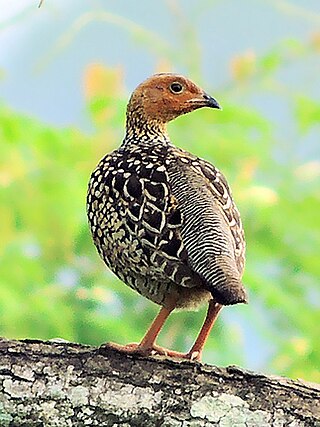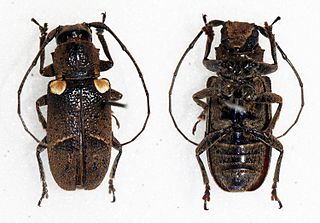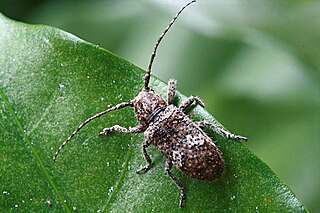
John Amos Comenius was a Moravian philosopher, pedagogue and theologian who is considered the father of modern education. He served as the last bishop of the Unity of the Brethren before becoming a religious refugee and one of the earliest champions of universal education, a concept eventually set forth in his book Didactica Magna. As an educator and theologian, he led schools and advised governments across Protestant Europe through the middle of the seventeenth century.

The golden pheasant, also known as the Chinese pheasant, and rainbow pheasant, is a gamebird of the order Galliformes and the family Phasianidae (pheasants). The genus name is from Ancient Greek khrusolophos, "with golden crest", and pictus is Latin for "painted" from pingere, "to paint".

Orbis Pictus, or Orbis Sensualium Pictus, is a textbook for children written by Czech educator John Amos Comenius and published in 1658. It was the first widely used children's textbook with pictures, published first in Latin and German and later republished in many European languages. It has been described as "probably the first purpose-made children's picturebook". The revolutionary book quickly spread around Europe and became the defining children's textbook for centuries.

The painted francolin or painted partridge is a species of francolin found in grassy areas in central and southern India and in the lowlands of southeastern Sri Lanka. They are easily detected by their loud calls especially during the breeding season. Thomas C. Jerdon noted that the species was found mainly in Central India south of the Narmada and to the east of the Western Ghats as well as the Chota Nagpur and Northern Circars. It can be confused only with the black francolin with which it partly overlaps and is said to sometimes hybridize. This species can be told apart from a black francolin female by the lack of a rufous hind collar and the white spots on the underside. The face is rufous and there is no dark stripe running behind the eye.

The painted tree-rat is a species of spiny rat from Brazil, restricted to north-eastern Bahia in eastern Brazil. It is the only species in the genus Callistomys.

The mountain quail is a small ground-dwelling bird in the New World quail family. This species is the only one in the genus Oreortyx, which is sometimes included in Callipepla. This is not appropriate, however, as the mountain quail's ancestors diverged from other New World quails earlier than the bobwhites, no later than 6 mya.
The genus Neacomys, also known as bristly mice because of their spiny fur, includes several species of rodents in the tribe Oryzomyini of family Cricetidae. It is most closely related to Oligoryzomys, Oreoryzomys, and Microryzomys. Neacomys species are mainly found in the Amazon basin, but N. pictus occurs in Panama and N. tenuipes in montane Colombia.

Leiarius is a genus of long-whiskered catfishes native to South America. Most of the genus' species are found in the aquarium hobby as ornamental fish.
Neacomys pictus, also known as the painted neacomys or painted bristly mouse, is a species of rodent in the genus Neacomys of family Cricetidae. It is found only in Panama.
Katcha is a village in the Bassar Prefecture in the Kara Region of north-western Togo.

The African wild dog, also known as the painted dog or Cape hunting dog, is a wild canine native to sub-Saharan Africa. It is the largest wild canine in Africa, and the only extant member of the genus Lycaon, which is distinguished from Canis by dentition highly specialised for a hypercarnivorous diet and by a lack of dewclaws.
The Orbis Pictus Award for Outstanding Nonfiction for Children recognizes books which demonstrate excellence in the "writing of nonfiction for children." It is awarded annually by the National Council of Teachers of English to one American book published the previous year. Up to five titles may be designated as Honor Books. The award is named after the book considered to be the first picture book for children, Orbis Pictus, by John Amos Comenius, which was published in 1657. The award has recognized one book annually without exception since it was inaugurated in 1990.

Suillus spraguei is a species of fungus in the family Suillaceae. It is known by a variety of common names, including the painted slipperycap, the painted suillus or the red and yellow suillus. Suillus spraguei has had a complex taxonomical history, and is also frequently referred to as Suillus pictus in the literature. The readily identifiable fruit bodies have caps that are dark red when fresh, dry to the touch, and covered with mats of hairs and scales that are separated by yellow cracks. On the underside of the cap are small, yellow, angular pores that become brownish as the mushroom ages. The stalk bears a grayish cottony ring, and is typically covered with soft hairs or scales.

Pimelodus pictus, also known as the pictus cat or pictus catfish, is a small member of the catfish family Pimelodidae, native to the Amazon and Orinoco river basins and commonly kept as a pet in freshwater aquariums. Pictus catfish are sometimes mislabeled as Angelicus cats in the aquarium trade, but the latter name actually refers to an unrelated African catfish, the mochokid Synodontis angelica.

Prosoplus is a genus of longhorn beetles of the subfamily Lamiinae, containing the following species:
Prosoplus atlanticus is a species of beetle in the family Cerambycidae. It was described by Stephan von Breuning in 1938.

Rhytiphora bankii is a species of beetle in the family Cerambycidae. It was first described by Johan Christian Fabricius in 1775, under the genus Lamia. It is known from Australia, the Philippines, Borneo, Java, Micronesia, New Guinea, Hawaii, Moluccas, Sumatra, Vietnam, and has been introduced into Japan. The Australian species of Prosoplus were synonymised with Rhytiphora in 2013.
Prosoplus costatus is a species of beetle in the family Cerambycidae. It was described by Karl-Ernst Hüdepohl in 1996. It is known from Borneo and Malaysia.
Prosoplus lividus is a species of beetle in the family Cerambycidae. It was described by Masaki Matsushita in 1935.
Prosoplus sinuatofasciatus is a species of beetle in the family Cerambycidae. It was described by Blanchard in 1855.











